Supporting materials
EIROforum exchange worksheet (Word)
EIROforum exchange worksheet (PDF)
Download
Download this article as a PDF

Connect your class with scientists across Europe in a video-conference exchange – and find out about life as a scientific researcher.
Do your students ever complain about the mismatch between school subjects and real life? And do you wonder what science teachers can do to show that there’s more to science than laws and theories? These thoughts often come to mind, so two years ago, while I was reading the EIROforum news section of Science in School, I was inspired to start a new school project with the aim of connecting school science with science in practice.
My idea was to set up video conferences for my students to interact with working scientists and learn about research happening now – without even leaving the classroom. I chose to collaborate with scientists working at the intergovernmental organisations of EIROforumw1, which cover research across the sciences, from fundamental physics at CERN, to life sciences at the European Molecular Biology Laboratory (EMBL) and space science at the European Space Agency (ESA).
After successfully completing the project with my students in the 2017–2018 school year, I am pleased to share some guidelines outlining the main steps that we took, in the hope of inspiring other teachers to initiate a similar project in their own schools. I began thinking about the project during the preceding academic year, so that I was ready to start running it with my students in September.
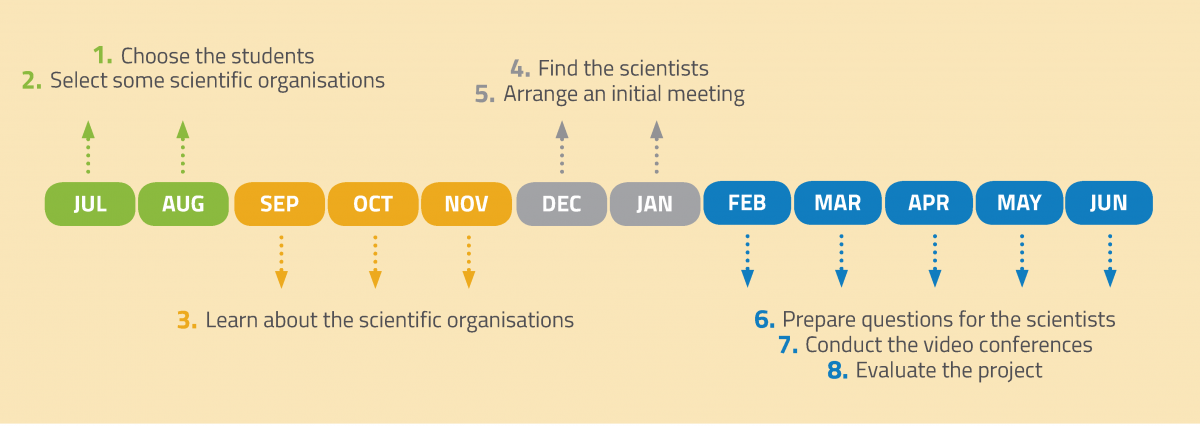
Select a particular class or age group for the project. The scientists provide valuable insights into careers in science, so the project is particularly useful for older students.
I implemented the project with students aged 17 at the Senior High School of Parga in western Greece. The students were studying a science-oriented curriculum, and they were advanced enough in their studies to identify links between the school subjects and the science happening at the different organisations.
Choose 6–8 organisations to potentially collaborate with. Provide your students with a simple worksheet to see how much your students already know about these organisations.
Since this project was inspired by the EIROforum news, I used the EIROforum organisations as our starting point. However, you could find other organisations that are of interest to you and your students, within Europe or specifically in your home country.
To gauge their knowledge of the different organisations before we began the project, the students completed a worksheetw2 to outline any facts they already knew, such as where each of the institutes is located, and what their main research aims are. I kept the responses to compare after the project.
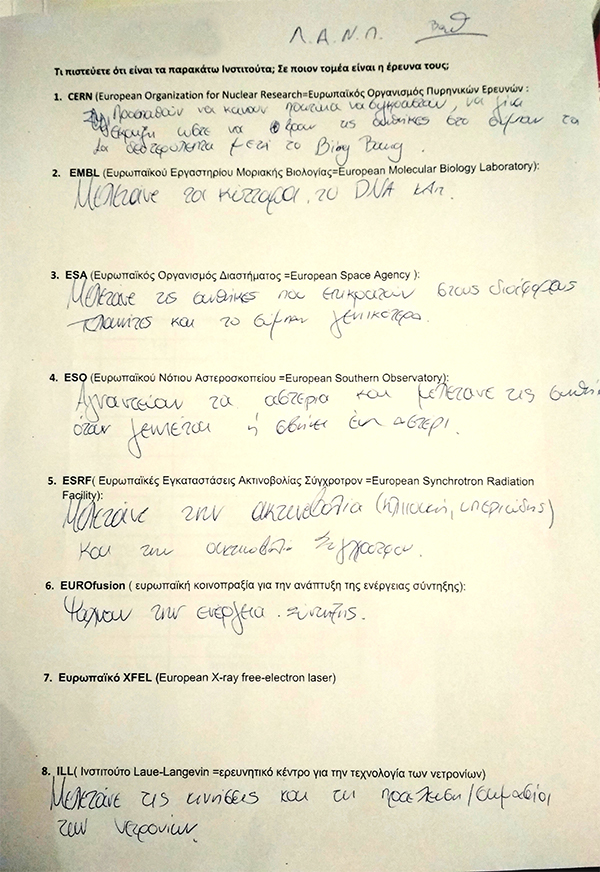
Divide your class into groups of 2–3 students. Ask each group to conduct some basic research into one of the scientific organisations and present the key information to the rest of the class.
I assigned each group a different organisation (from step 2) so that all of the organisations were researched. We allocated four physics lessons (i.e. 4 hours) over a period of 2 months for students to work on their presentations. Any further work was completed at home.
Questions that students considered included:
Students in each group presented their research to the class in the form of a talk. After the presentation, the other students asked questions to the group about the institute. My students uploaded their research to an online bulletin board called Padlet, for the rest of the class to see.
Choose a final list of 4–5 organisations to work with. Contact each organisation and invite scientists to participate in a video conference with your students.
We created the shortlist based on the students’ presentations and their reactions to the organisations. My students were keen to talk to CERN, EMBL, ESA and the European Southern Observatory (ESO), so I contacted those organisations to explain the aim of the project and outline what the scientists would be asked to do. We also chose to reach out to Greek scientists in particular. This was for two reasons: first, so that our students could talk more freely to the scientists without any language barriers; and second, because this showed the students that science operates without borders – scientists, even from small countries, can work in research centres across Europe and beyond.
After I sent emails to those four organisations, three of them put me in touch with Greek scientists: an ESO astrophysicist, an EMBL geneticist, and an ESA space engineer. We arranged for these three scientists to take part in the project. The scientists were keen to spread science to their home country, and were particularly happy to work with students.
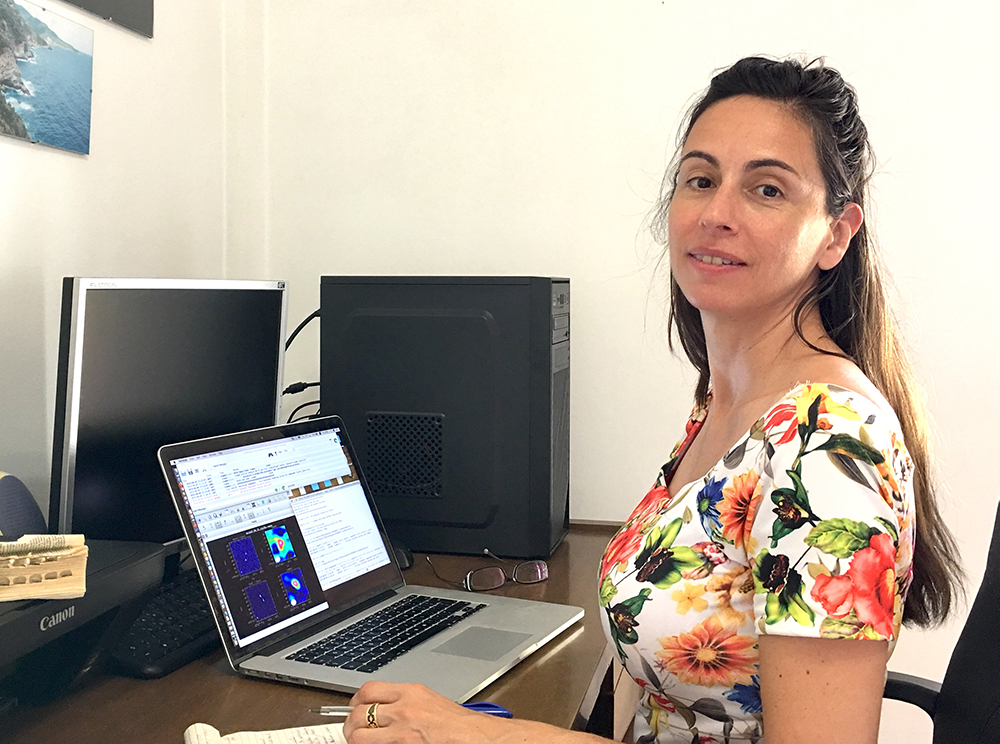
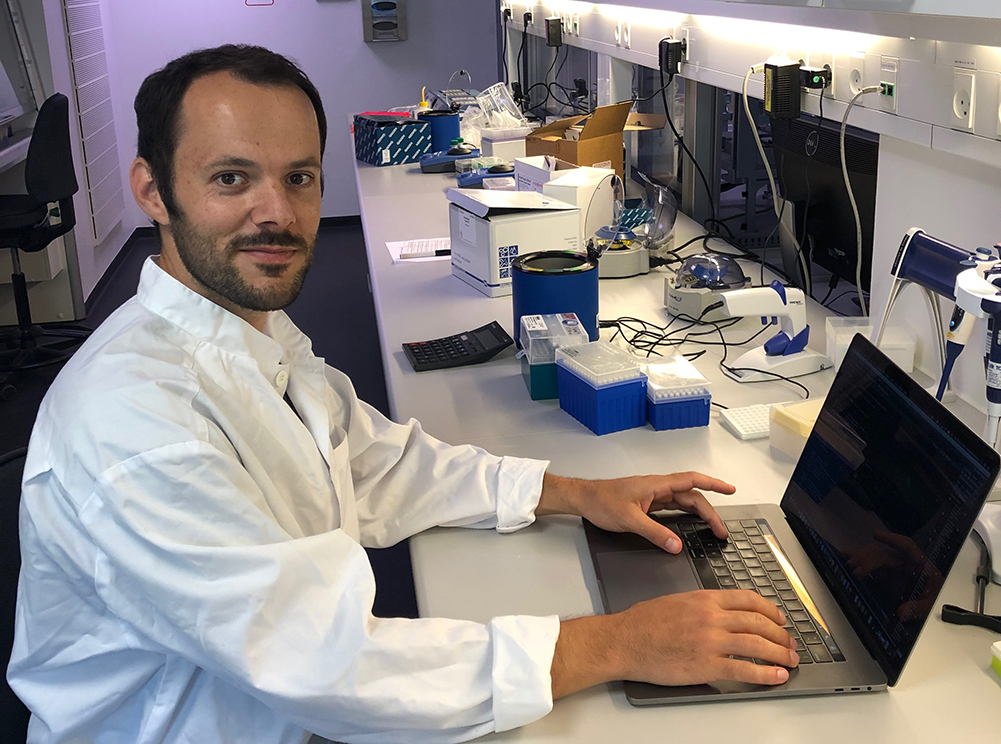
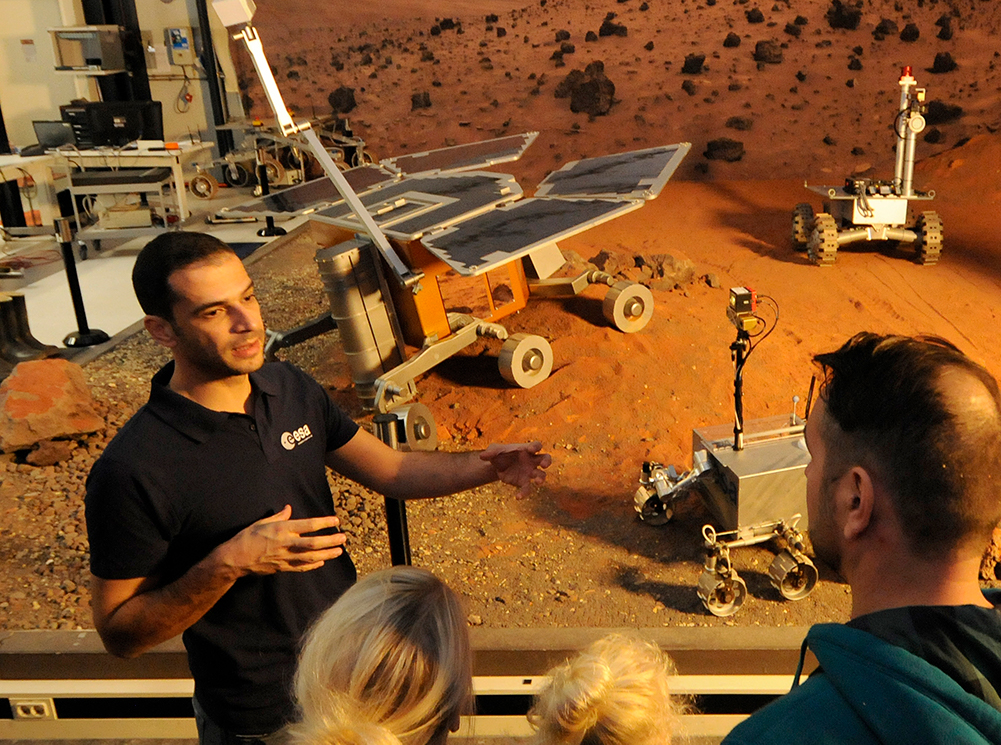
Organise an initial video conference to meet the individual scientists and discuss the logistics of the whole-class conference.
Once a scientist agreed to participate in our whole-class conference call, I set up a one-to-one video conference (via Skype) with them to discuss further details. During the call, we arranged a suitable date and time to hold the whole-class conference. We organised one video conference per month in February, March and May with ESO, EMBL and ESA, respectively. We found this to be a suitable schedule, giving students enough time to prepare, and subsequently evaluate each session.
We also agreed on the style of their video conference. For example, the meeting could follow a simple conversation between the students and the scientist, or it could be more formal, with the scientist giving a brief presentation (e.g. about their organisation, their role and their academic studies and current research) before opening up the session for questions.
Before each video conference, ask your students to write down questions that they would like to ask each scientist.
Students might like to know how the scientist came to be working at that organisation, what their day-to-day work involves, or what area of science they are currently researching. Our students exceeded our expectations by coming up with many interesting questions, for example:
For the video conferences, we chose to leave the conversations open to all students, so they could all ask questions as the discussions evolved. You could, however, work with the students to create a list of final questions for each video conference, and assign the questions to nominated students to ask during the conference.
Carry out the video conference in your classroom, school hall, computer lab or science lab. How the conversation evolves is in the hands of you and your students!
All you need is a computer with the correct software installed (such as Skype), a good internet connection, a projector and speakers. On average, our video conferences lasted for around 90 minutes. We were delighted by how much the students learned about the different scientific organisations and the scientists’ research. Talking face-to-face (although via the internet) to a ‘real’ scientist was a valuable experience for them all, and the scientists were very willing to answer questions and provide career advice.
Don’t forget to thank the scientists for being part of the project by following up with them after the video conference. Why not keep in touch with them for a future project, if they are happy to do so?
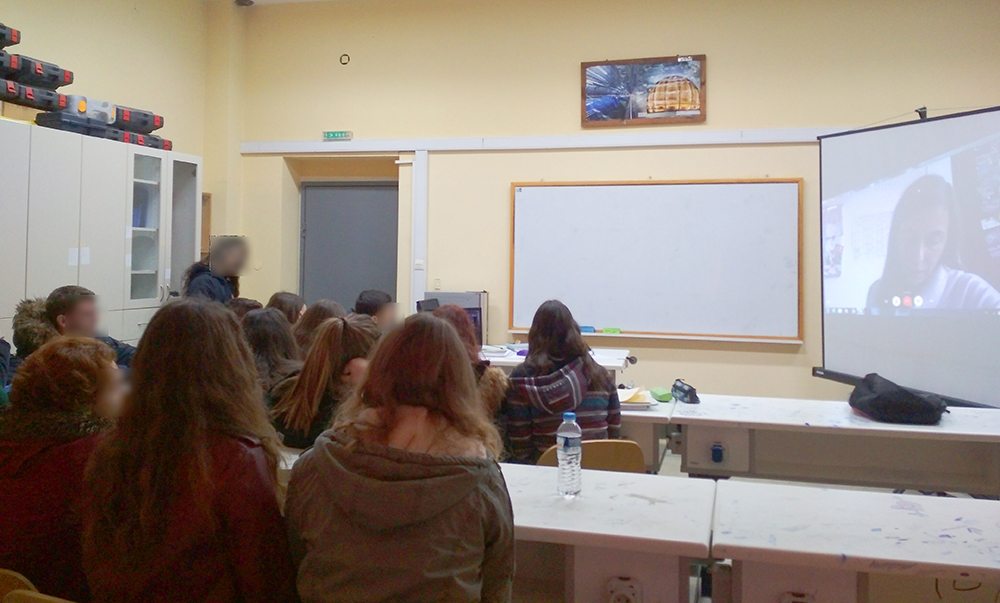
After each video conference, ask students to give their feedback and share their experiences of speaking to the scientist. This can be done in small groups or as a whole-class discussion.
Encourage students to say what interested them the most, and if there was anything that surprised them. In our project, many students were surprised by how young the scientists were, as they had preconceptions that scientists at these organisations were older. Meeting the different scientists gave students a new perspective. I recall one student saying, “Before the conference, I thought that scientists worked in the lab day and night.” The students soon appreciated that the scientists led ordinary lives too, including spending time with family and enjoying music.
Finally, I asked my students to fill out the same worksheet from step 2, and they compared their new answers to their answers from the start of the project. They were pleased to see their newly acquired knowledge.
We anticipate that the students, irrespective of their future careers, will remember this unique experience from their school studies. We hope this article is a useful starting guide if you are interested in implementing a similar project at your school. For more information, do not hesitate to e-mail the author.

This article outlines an interesting project that enables students to learn about science careers in different research institutes. The article describes a Greek science teacher’s own experiences, and provides a structured, interactive approach for a project that will be more engaging for the students than just reading or watching films about careers. The whole premise of the project is useful internationally, so it would need very little modification to be relevant and applicable to different countries.
Marie Walsh, science lecturer, Ireland
EIROforum exchange worksheet (Word)
EIROforum exchange worksheet (PDF)
Download this article as a PDF